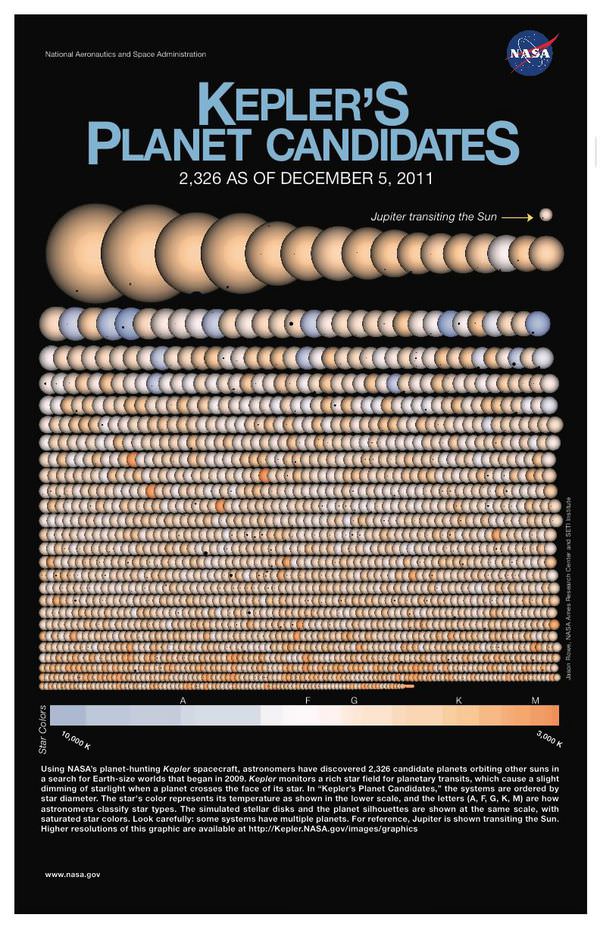That’s exactly the scenario shown by a mesmerizing animation called “Worlds” by Alex Parker — a single system containing 2299 multiple-transit planetary candidates identified to date by NASA’s Kepler space telescope, which is currently scrutinizing a field of view within the constellation Cygnus to detect the oh-so-faint reductions in brightness caused by planets passing in front of their stars.
The search requires patience and precision; it’s not really this crowded out there.
Alex’s animation takes 2299 candidates that have been observed multiple times, each shown to scale in relation to their home star, and puts them in orbit around one star, at their relative distances.
The result, although extravagantly impossible, is no less fascinating to watch. (I suggest going full screen.)
“The Kepler observatory has detected a multitude of planet candidates orbiting distant stars,” Alex writes on his Vimeo page. “The current list contains 2321 planet candidates, though some of these have already been flagged as likely false-positives or contamination from binary stars. This animation does not contain circumbinary planets or planet candidates where only a single transit has been observed, which is why ‘only’ 2299 are shown.
“A fraction of these candidates will likely be ruled out as false positives as time goes on, while the remainder stand to be confirmed as real planets by follow-up analysis,” Alex adds.
The white ellipses seen when the animation pulls back are the relative sizes of the orbits of Mercury, Venus and Earth.
At this time the Kepler mission has identified 2321 planetary candidates, with 74 exoplanets confirmed. See more on the Kepler mission here.
Animation: Alex Parker. Image: Kepler mission planet candidates family portrait (NASA Ames/Jason Rowe/Wendy Stenzel)


Okay, now I’m dizzy.
It would be interesting to see the effect gravity would have in this scenario. The chaos of planets crashing into each other, forming new planets, and perhaps being destroyed again.
Imagine the tidal forces on those worlds so close to their parent star.
what is really the purpose of this ?
Fun
“F” is for friends who do stuff together, “U” is for u and me…. try it!
We all now realize that are millions of “habitable” planets in our Milky Way (given the statistical extrapolation of the number of planets in our “neighborhood”). Not to mention that there are billions of galaxies, and likely billions of universes (it is likely that our universe is part of a multiverse).
.
The number of habitable planets seems potentially limitless.
.
However, as other comments have noted, we evolved not only on the earth, but WITH with Earth. A clear example of this is the fact that out bodies are comprised of more non-human cells than human ones (Google “Human microbiome”). We can’t survive without these microbes and the symbiotic relationship we have with them.
.
Our biological relationship to our planet simply can’t be dismissed.
.
My own perspective on planetary colonization is that it will occur, but not by humans. It will be done by our progeny, “machines” with artificial intelligence that will be largely immune to the challenges of lengthy space flight over vast distances.
.
The human body is just so limited, and suited only for life on the Earth. The next phase of human evolution will be to transcend the human body via machine intelligence.
.
Since Sol should be fine for a few billion years, all we need to do (for those who decide to remain in mortal human form) is to be dependable caretakers of our planet, and life will be good here on Mother Earth.
tinyurl.com/cyk9xz2
m